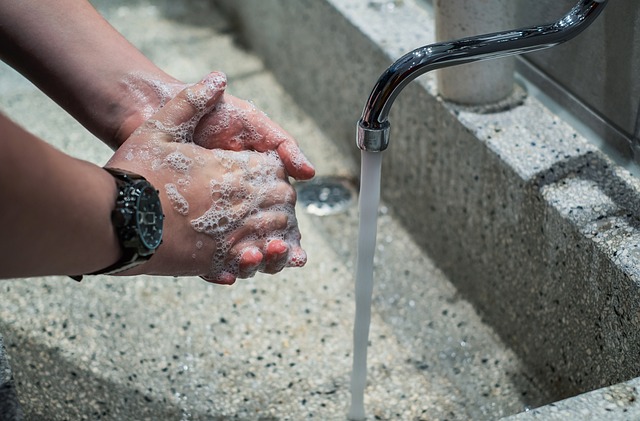When people think of a healthy lifestyle, the first images that come to mind are often exercise routines, balanced meals, and adequate sleep. Yet one fundamental element that underlies all these aspects is the water that circulates within our bodies and the environment. Water protection, the deliberate act of safeguarding clean and accessible water sources, is not just a civic responsibility—it is a cornerstone of personal well‑being and nutrition. By understanding how water quality, quantity, and stewardship intersect with our daily choices, we can create habits that promote health, support sustainable ecosystems, and nourish the next generation.
Why Water Is Central to Human Health
Water accounts for roughly 60% of an adult body’s mass. Its roles are vast: it transports oxygen, nutrients, and hormones; it regulates body temperature; it lubricates joints; it dissolves waste products for excretion. Even a small deviation in hydration can trigger cognitive fatigue, digestive discomfort, or impaired physical performance. Moreover, the quality of the water we drink directly influences the nutrients we absorb. Contaminants such as heavy metals or excess fluoride can interfere with bone growth or thyroid function. Thus, the concept of water protection extends beyond environmentalism; it becomes a public health strategy.
The Connection Between Water Protection and a Healthy Lifestyle
Maintaining clean water supplies is inseparable from living a healthy lifestyle. When water sources are polluted, the food produced with that water carries residues that can compromise diet quality. Conversely, when water is protected, the entire food chain—from irrigation to processing—benefits from lower toxin loads. This relationship can be illustrated through several key pathways:
- Reduced Exposure to Toxins: Clean water means fewer chemicals infiltrate crops and livestock, lowering the risk of chronic diseases associated with long‑term toxin exposure.
- Enhanced Nutrient Density: Plants grown in unpolluted soil and watered with pure sources retain higher levels of vitamins, minerals, and antioxidants.
- Improved Digestive Health: Safe drinking water eliminates gastrointestinal pathogens that cause diarrhea and malabsorption, ensuring the body can fully utilize the nutrients we ingest.
- Energy Conservation: Efficient water use in households reduces energy consumption associated with pumping and heating, indirectly lowering the carbon footprint that impacts global health.
How Individuals Can Protect Water on a Daily Basis
While large infrastructure projects and policy reforms are essential, everyday actions wield significant influence. Here are practical steps that anyone can integrate into their routine:
- Use a reusable water bottle and avoid single‑use plastic containers.
- Filter tap water when necessary, especially in regions with known contamination issues.
- Report any visible pollution—such as oil slicks, chemical spills, or sewage overflow—to local authorities promptly.
- Adopt rainwater harvesting systems for irrigation, reducing demand on municipal supplies.
- Choose organic or locally sourced foods that rely on sustainable water practices.
- Participate in community clean‑up initiatives that focus on rivers, lakes, and wetlands.
Water Protection and Balanced Nutrition: A Symbiotic Relationship
When water is clean, the nutrients it transports—iron, calcium, potassium, and many others—reach their full potential. Studies show that fruits and vegetables grown with protected water contain 15-20% more essential minerals than those from contaminated sources. Moreover, proper hydration enhances the body’s ability to absorb these nutrients. Here’s how:
“Hydration is the unseen driver of nutrient absorption. Without adequate fluid, the gut’s lining becomes less permeable, limiting the uptake of vitamins and minerals.” – Dr. Elena Vargas, Nutritionist and Public Health Advocate
Consequently, a healthy lifestyle that includes water protection yields a more robust nutrient intake, leading to better immune function, stronger bones, and improved metabolic balance.
Community and Policy Measures that Amplify Water Protection
Individual actions, while powerful, thrive within supportive frameworks. Communities that prioritize water protection tend to report lower rates of waterborne illnesses and higher overall health indices. Key policy measures include:
- Strict regulation of industrial discharges into waterways.
- Investment in modern wastewater treatment plants that remove emerging contaminants.
- Implementation of watershed protection plans that limit deforestation and erosion.
- Incentivizing water‑saving appliances and practices through rebates or tax credits.
- Education campaigns that raise awareness of the link between water quality and nutrition.
Practical Tips for Incorporating Water Protection Into Your Daily Routine
Balancing personal health goals with environmental stewardship is easier than it may seem. Below are actionable ideas that merge both realms:
- Begin each morning with a glass of filtered water, noting the taste to detect any changes that might signal contamination.
- When cooking, use a filtration pitcher or a water filter bottle to reduce chlorine or heavy metal content.
- Choose recipes that emphasize plant‑based proteins, which generally require less water per calorie than animal proteins.
- Plan outdoor activities around local water bodies that are protected, such as kayaking on certified clean rivers.
- Track your water usage with a simple log; aim to reduce daily consumption by 10-15% over a month.
- Donate or volunteer with local water advocacy groups, especially those focused on rural or underserved communities.
Looking Ahead: A Future Where Water Protection Drives Health
As global temperatures rise and water scarcity becomes more pronounced, the interplay between water protection and health will intensify. Advances in nanofiltration, AI‑driven water quality monitoring, and community‑based stewardship programs promise to transform how we safeguard our water resources. In turn, these innovations will support healthier diets, reduce the prevalence of chronic disease, and enhance resilience against climate‑related health risks.
Embracing water protection is not a luxury—it’s a necessity that aligns environmental responsibility with personal wellness. By protecting water at home, in the community, and on a policy level, we lay the groundwork for a healthier, more balanced future for ourselves and generations to come.




